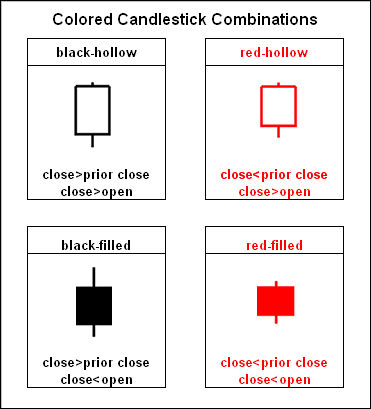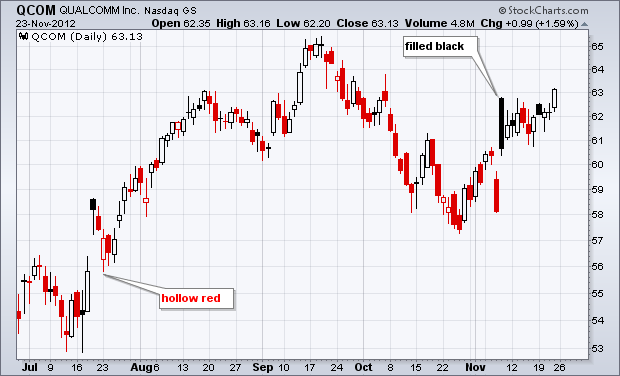|
|
Candlestick colors and fillings tell chartists the story of the trading day. Colored candlesticks are made up of four components in two groups. First, a close lower than the prior close gets a red candlestick and a higher close gets a black candlestick. Second, a candlestick is hollow when the close is above the open and filled when the close is below the open. The table below shows the four combinations.
Each candlestick reflects the day's price action. In particular, the hollow candlesticks tell us that a security moved higher after its open. A filled candlestick indicates that a security moved lower after the open. This is important information. Moving lower after the open reflects weakness, while moving higher after the open reflects strength.
Red-hollow and black-filled candlesticks also convey important information on price action. Take for instance the red-hollow (no, it’s not a bird). Even though the close was below the prior close (red), prices managed to move higher after the open (hollow). Despite closing lower on the day, there was some evidence of buying pressure during the day. The black-filled candlestick is the opposite. Even though the close was above the prior close (black), prices moved lower after the open (filled). Despite closing higher on the day, there was some evidence of selling pressure.




